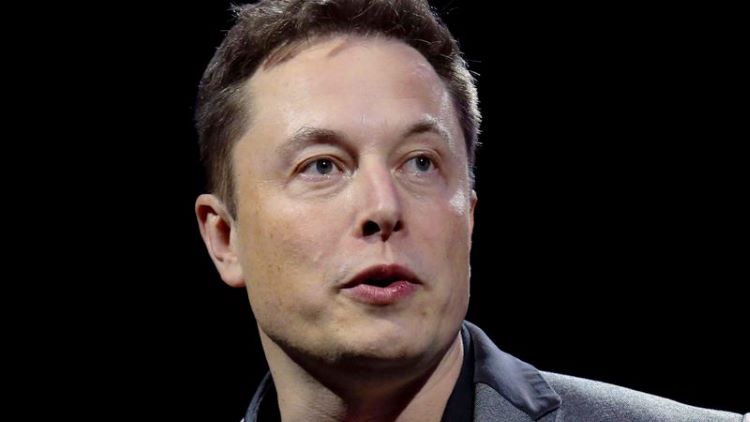Anamika Dey, editor
Brief news
- Tesla’s upcoming robotaxi event, dubbed CyberCab, faces skepticism due to past unfulfilled promises of autonomous vehicles and safety concerns, including phantom braking issues under investigation by the NHTSA.
- Analysts express mixed sentiments, with some optimistic about Tesla’s potential growth while others maintain a cautious outlook, as Tesla shares have declined significantly this year.
- The event will showcase Tesla’s advancements, but analysts emphasize the need for clarity on operational strategies, safety measures, and business models for successful robotaxi deployment.
Detailed news
Hours remain until Tesla’s much awaited robotaxi event, but investors will soon get a peek at what CEO Elon Musk has dubbed the CyberCab.
Many are skeptical of Tesla’s technological prowess and the timing of the robotaxi’s release, having witnessed a decade of unfulfilled promises to provide autonomous vehicles that can drive safe distances without a human at the wheel.
The “We, Robot” event, dedicated to robotaxis, is set to commence at 7:00 p.m. Pacific Time at a Warner Bros. studio in Burbank, California, and will be livestreamed on X.
Garrett Nelson, an analyst at CFRA, warned in a preview on October 4 that the environment of a closed course on a movie studio lot might render a Tesla robotaxi appear more sophisticated than it would in typical traffic and on public roads. CFRA has assigned a hold rating to the stock.
Tesla shares declined almost 1% on Thursday, reaching $238.77. They have declined over 4% for the year and are over 40% below their peak attained in 2021.
The event occurs one week subsequent to Tesla’s announcement of third-quarter deliveries of 462,890, raising the annual total to 1.35 million thus far. Tesla recorded deliveries of 1.81 million for the entirety of last year.
Optimistic analysts from firms such as Wedbush, ARK, and RBC Capital Markets conveyed confidence in their reports regarding the company’s potential for sustained sales growth, alongside the introduction of advanced technological products, including a long-awaited autonomous vehicle, humanoid robotics, and various AI-driven offerings.
Gene Munster of Deepwater Asset Management said CNBC’s “Fast Money” on Wednesday that he will attend the event and anticipates testing the robotaxi.
Munster, a long-time proponent of Tesla, believes the business will introduce robotaxis in certain cities by the conclusion of 2025. He anticipates that Tesla will unveil plans to manufacture an economical electric vehicle, maybe a simplified variant of its Model 3, as well as an electric van.
He stated that although he anticipates a decline in the stock following the event, it may “reach new highs” during the next two years when deliveries begin to increase.
Tesla was formerly regarded as a leader in autonomous car innovation, although has failed to produce or showcase robotaxi technology. The firm is currently seen as a slacker.
Waymo, a subsidiary of Alphabet, together with other Chinese companies, is now providing commercial robotaxi services in the United States.
Morgan Stanley analysts stated in a note on Wednesday that if Tesla successfully launches a “level 4” robotaxi, capable of operating autonomously without a driver, utilizing its existing “suite of hardware and software,” it would yield a cost-per-mile advantage compared to competitors.
Besides missing deadlines, Tesla has encountered safety concerns with its driving assistance technologies, marketed as the standard Autopilot and expensive Full Self-Driving (Supervised) choices.
Missy Cummings, a professor at George Mason University and director of the Mason Autonomy and Robotics Center, stated that Tesla executives should articulate their approach to addressing the issue of “phantom braking,” which pertains to occurrences where vehicles equipped with Advanced Driver Assistance Systems (ADAS) apply brakes unexpectedly at highway speeds, despite the absence of visible obstacles.
The National Highway Traffic Safety Administration (NHTSA) is conducting an ongoing inquiry into Tesla’s phantom braking issues. Cummings, a former senior safety advisor to the EPA, stated to CNBC, “If they cannot resolve phantom braking for a level 2 vehicle, they will be unable to address it for level 4 or 5 vehicles.” Level 2 cars incorporate driver assistance technologies.
Data monitored by NHTSA since 2021 indicates that there have been 1,399 accidents with Tesla driving assistance systems activated within 30 seconds before to the collision, with 31 of these incidents resulting in reported deaths.
Sam Abuelsamid, an analyst at Guidehouse Insights, stated that Musk or other Tesla executives have to articulate their strategies for vehicle performance in various weather conditions, including fog, rain, snow, and lightning, as well as in dimly lit tunnels.
He also seeks clarification from Tesla officials about their willingness to assume complete culpability for the operation of these cars, which he deems “essential prerequisites for a genuine robotaxi devoid of human intervention.”
Abuelsamid inquires whether Tesla intends to own and run its robotaxis or lease or sell them to customers and fleet operators.
“Numerous companies have advanced in the realm of automated driving technology,” stated Abuelsamid. “However, they have struggled to establish a viable and profitable business model.” Tesla has several obstacles, and I seek to understand how all the components align.
Source : CNBC News




